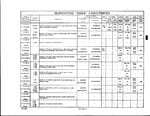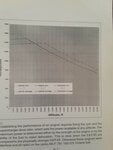GrauGeist
Generalfeldmarschall zur Luftschiff Abteilung
And to touch on the P-39 armor "thing" - I appreciate the exhaustive attempts to try to reimagine the P-39 into a world beater by moving this and eliminating that, so it would maybe, somehow, be better than it was.
So let's do this:
We'll remove the gearbox armor and while we're at it, let's remove the 2 gallon oil tank, too. Then let's get rid of the Olds 37mm cannon, way too heavy.
It seems to me that the driveshaft assembly is extra weight we don't need, so that goes.
What's next - oh yeah, CoG issues, so let's move the engine to the front where all that empty space is and maybe adjust the mainwing a bit to balance things out. Nice.
Now the two cowl .50MGs will have to go in the wings with the others, of course.
Ahh yeah, let's get rid of the nosegear, way too heavy - a tailwheel will do just fine, less weight, you know.
So now we get to see the what we've created and...what do we have? A P-40 - that's what we have.
Someone better get the DeLorean and go back and tell Bell!
So let's do this:
We'll remove the gearbox armor and while we're at it, let's remove the 2 gallon oil tank, too. Then let's get rid of the Olds 37mm cannon, way too heavy.
It seems to me that the driveshaft assembly is extra weight we don't need, so that goes.
What's next - oh yeah, CoG issues, so let's move the engine to the front where all that empty space is and maybe adjust the mainwing a bit to balance things out. Nice.
Now the two cowl .50MGs will have to go in the wings with the others, of course.
Ahh yeah, let's get rid of the nosegear, way too heavy - a tailwheel will do just fine, less weight, you know.
So now we get to see the what we've created and...what do we have? A P-40 - that's what we have.
Someone better get the DeLorean and go back and tell Bell!


